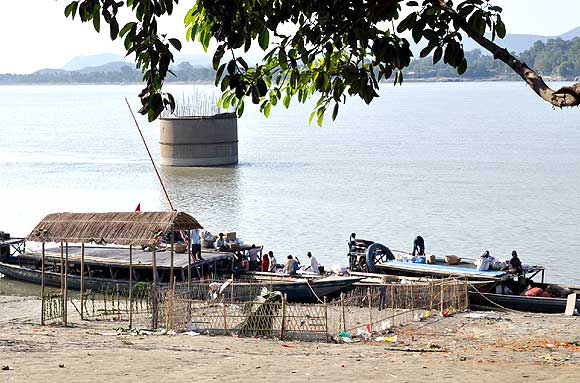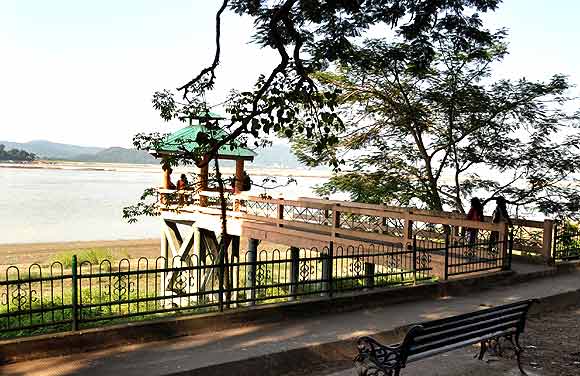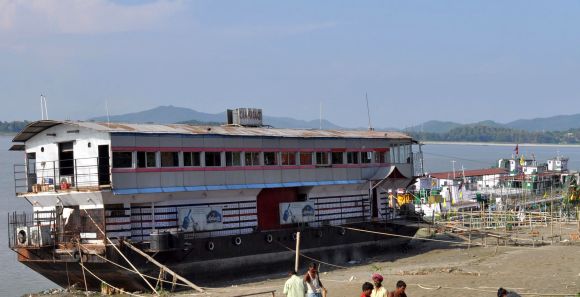 | « Back to article | Print this article |
In PIX: Life by the mighty Brahmaputra
It originates in the Tibetan Himalayas and enters the Indian landmass at Upper Siang in Arunachal Pradesh before flowing east to west through the entire stretch of Assam valley towards its final destination – the Bay of Bengal.
The mighty Brahmaputra river, also called the Red River, is called the only male river in Indian peninsula for its vast expanse and amazing vigour that decides the topography of Assam.
The total length of the river from its source in southwestern Tibet to the mouth in the Bay of Bengal is about 2,850 km (including Padma and Meghna up to the mouth). Its length within the Assam valley is about 720 km and it spreads into a vast expanse of water ranging from 3 km to 22 km in different points along its course.
Click NEXT to read further...
In PIX: Life by the mighty Brahmaputra
In the plains of Assam, the river has formed numerous fertile isles called 'char' in local parlance and also changes its course very often. The river stands witness to the course of economy and social development in the Assam plains, where all major towns including the main city of Guwahati, located on its banks.
Life of the state's agrarian community as well as a sizeable section of urban populace is vastly dependent on the river that is the hub of various activities along its course throughout Assam valley.
The river is the only mode for commute for the community living on those fertile river isles producing huge volume of horticulture crops, jute etc. every year to cater to the need of mainland people. The river, its tributaries and large number of wetlands (called 'beel') linked to it are the main source of different species of fish that is the most sought after delicacy among all the communities in this part of the country.
Click NEXT to read further...
In PIX: Life by the mighty Brahmaputra
The river was the only way to bring industrial equipment, farm machinery to eastern Assam's oil and tea industry in 19th century during the colonial British era when economic development took root in North East India.
The river plays a major role in all the main cities of Assam especially in Guwahati where the course of Brahmaputra divides Guwahati into two – urbanised South Guwahati and semi-urban North Guwahati. The river front in Guwahati is buzzed with activities throughout the year without a break thereby providing source of livelihood to lakhs of people from various trades.
The river besides being an imposing formation in the landscape of entire Assam adds unique beauty to the cities of Guwahati, Tezpur and Dibrugarh. Thanks to the river, people living in Guwahati and other river bank cities get regular supply of fresh vegetables, milk, fish etc.
Click NEXT to read further...
In PIX: Life by the mighty Brahmaputra
The river's magnificence and scenic ambience, especially during sunrise and sunset attract people to its banks away from the grind of daily life. A number of recreation and refreshment joints coming up in Guwahati and recreation parks along the entire course of Brahmaputra bear testimony to this. The British rulers used to build all important offices and residential complexes for their representatives on the bank of the river. Most of those buildings still stand tall.
Many communities worship the river that is the pivot of folklore in the state. It has remained the source of inspiration for umpteen numbers of litterateurs in this part of the country. The river is also notorious for its fury during the rainy season and has so far eroded vast swaths of land along its banks much to the dismay of the people and the government, which is groping for ways to tame the mighty river.



